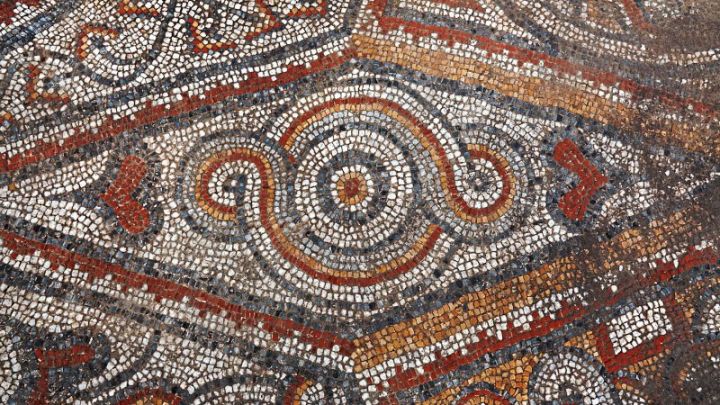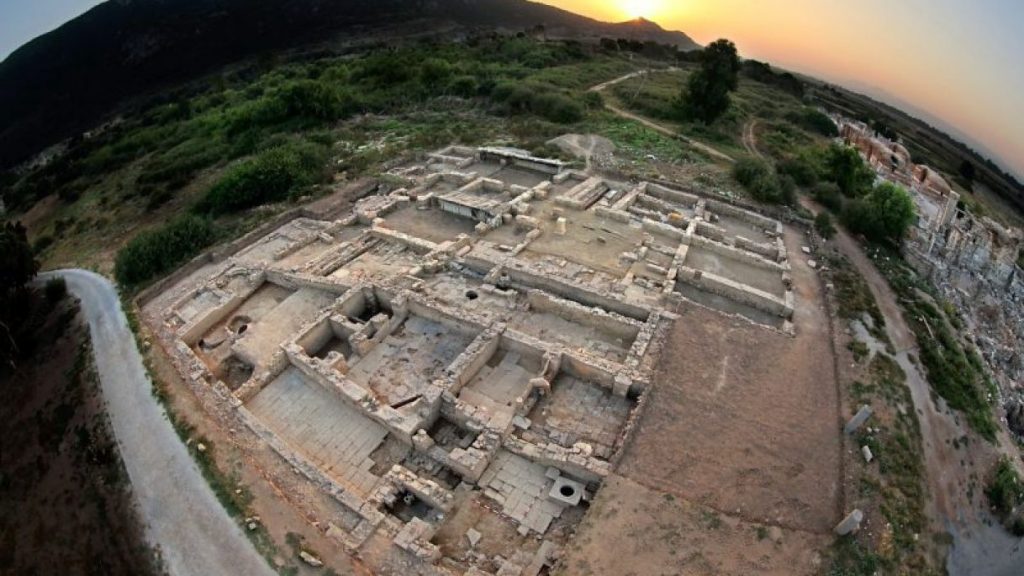“These are municipal residences of prominent and wealthy Ephesian citizens, whose houses served as spaces in which business was conducted and where clients and guests were received, and which, in short, promoted the prestige of their owners.” – Dr. Sabine Ladstätter, head of the Ephesus Project.

PHOTO: haaretz.com
EPHESUS, GREECE – Archaeologists have unearthed a highly ornate complex of six residential units, each containing built-in wells, stunning wall murals, and gorgeous floor mosaics that tell a story both of wealth and of worship.
Ephesus had always been known as a city for the wealthy. The city sitting on the Turkish coast reached its height 2000 years ago, during the 1st Century AD, under Roman power. Excavations at the city have lasted for over a hundred and fifty years.
It’s famous for the Temple of Artemis, one of the Seven Wonders of the Ancient World. It’s the size of a football field, and was a major hub of worship in the Roman Empire. Pilgrims from all around the known world would come to worship the goddess Artemis, the virginal huntress. Artemis/Diana was, in fact, one of the oldest goddess in the Greek and Roman pantheon.
Because thousands of tourists were flocking to Ephesus every year to visit the temple and seek the power of Artemis, Ephesus turned into a wealthy hub for tourism and trade. Pilgrims would arrive in Ephesus in March and early May to attend popular festivals. While there, they would donate to the temple and buy cult objects, usually as souvenirs or offerings to the goddess. This created a demand, and soon Ephesus led the Roman world in silversmithing, and became famous for its silver shrines to Artemis.
“Good Fortune! The silversmiths of the first and Greatest Metropolis of Asia, the thrice-honored temple guardian of the venerable Ephesians erected [this monument to] Valerius Festus, the flower of his ancestors, creator of many works in Asia and Ephesus…” – Ancient inscription unearthed in Ephesus.
The complex unearthed by archaeologists this year was nestled among several municipal buildings. They were home to the Ephesian elite. The wells drew their water from surrounding groundwater. The wall murals depicted popular mythology, much of it having to do with Artemis herself, and the lavish mosaics on the floor tell the same story.

PHOTO: haaretz.com

PHOTO: haaretz.com
In another house, dating much later – around the 6th century BC – at the height of the Byzantine Empire, the archaeologists uncovered the same rich mosaic floors that the earlier houses had, as well as a wall-mounted sword. The archaeologists are interpreting it as a status symbol. They believe the family living in the house would have placed the sword in one of their most prestigious rooms, where it was sure to be viewed by guests.
The elite of Ephesus believed their success was linked directly to the power their patron goddess had over the city. It makes sense that their homes would be filled with depictions of her to bring them good luck. In a way, their success was linked to Artemis. Perhaps the goddess wasn’t real, but the pilgrims’ belief in her was, and it was a belief that made the Ephesians a lot of money over the years. Without the tourism produced by the temple of Artemis, Ephesus would be no richer than the average Roman city. It makes sense, then, that, during the 1st Century AD when Christianity was first spreading throughout the known world, Ephesus was thrown into riots when the religion spread there. The people were afraid of this upstart faith, afraid of angering the goddess and of losing the power she gave them.
Perhaps they did. Two centuries later, an earthquake weakened the city. The riches of Artemis’ temple were sacked by barbarian tribes. They set the temple on fire. The belief in the Great Goddess of Ephesus was irreparably shaken. Ephesus would never be the same.
In July of 2015, Ephesus was declared a UNESCO World Heritage Site. It continues to be a focus of historical attention, home to a research platform of 200 scientists from over 20 different countries. Who knows what they’ll unearth next?

